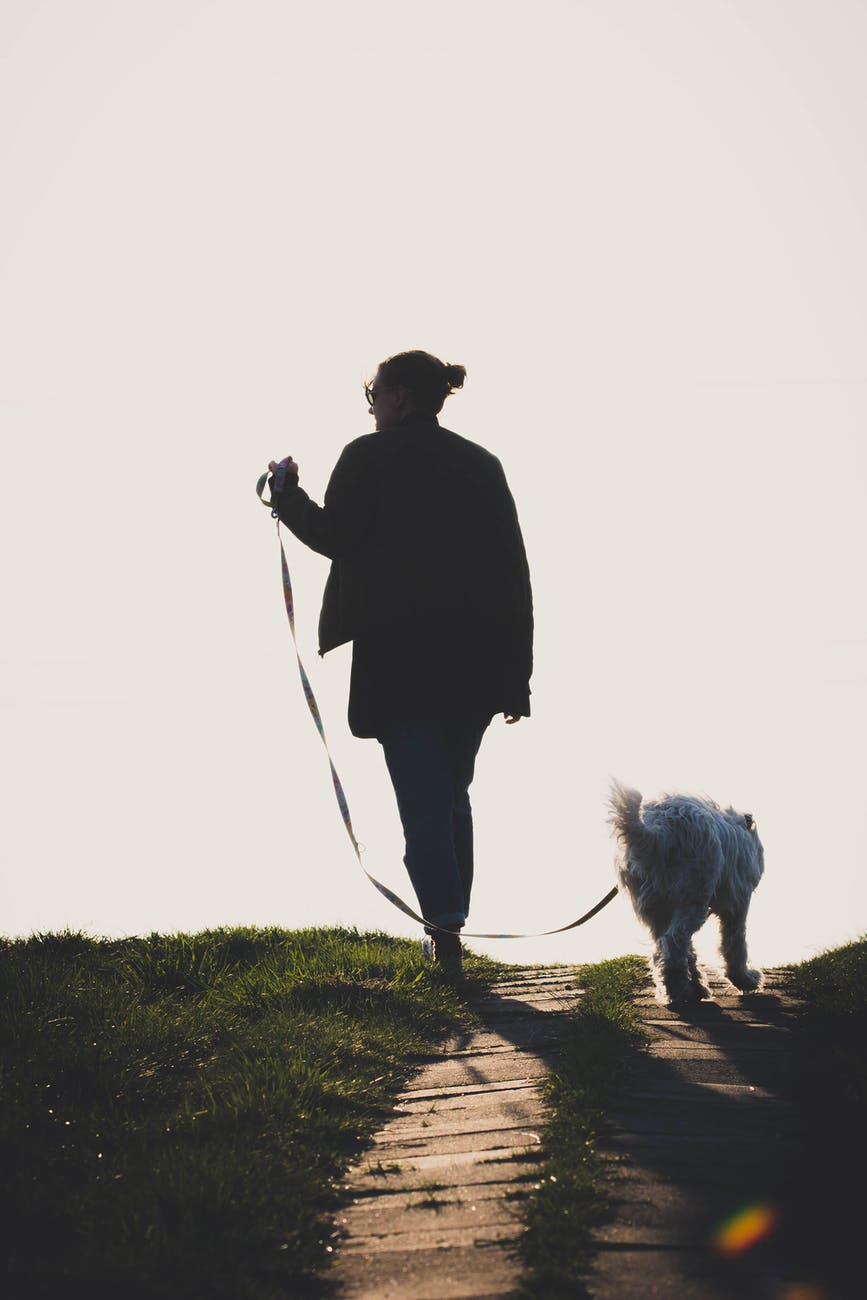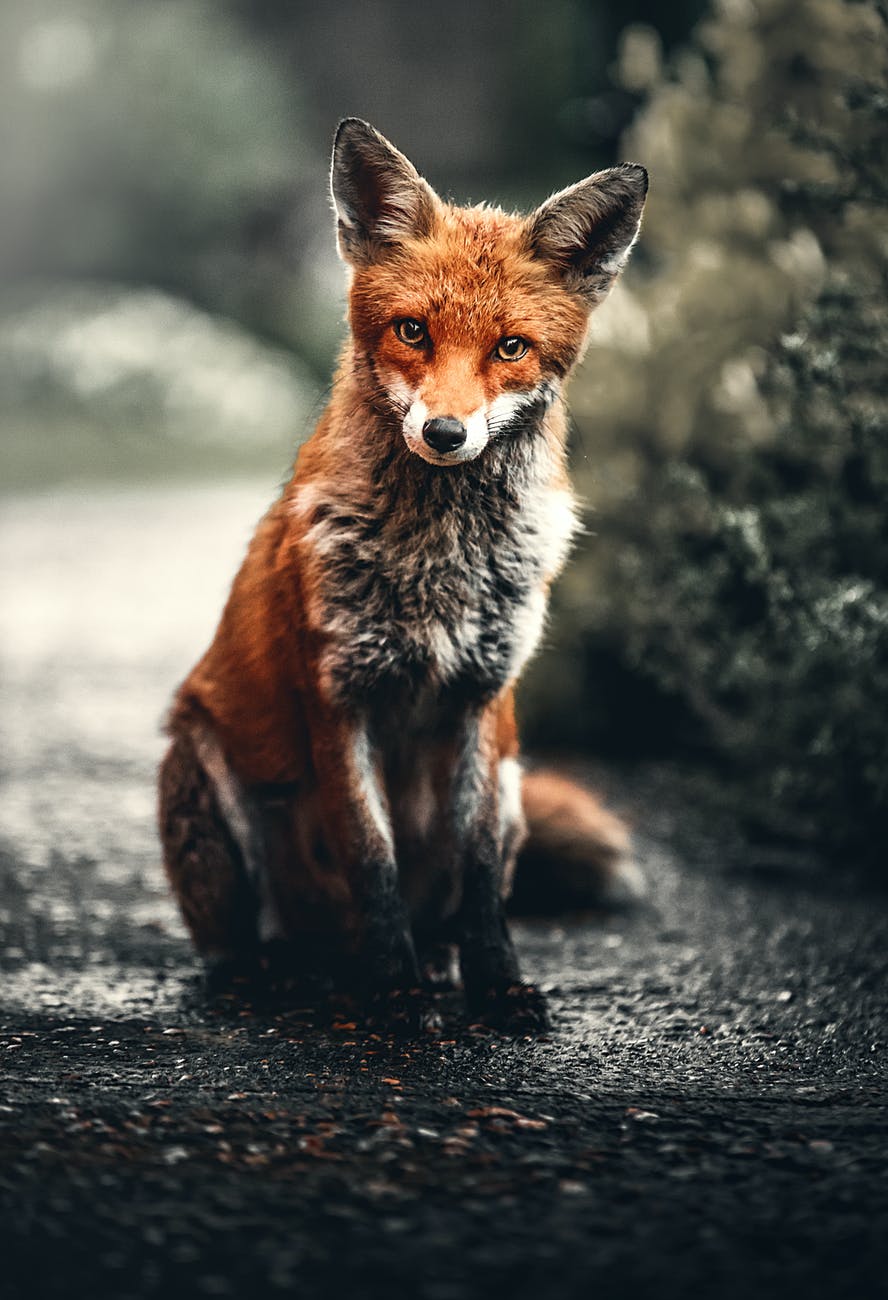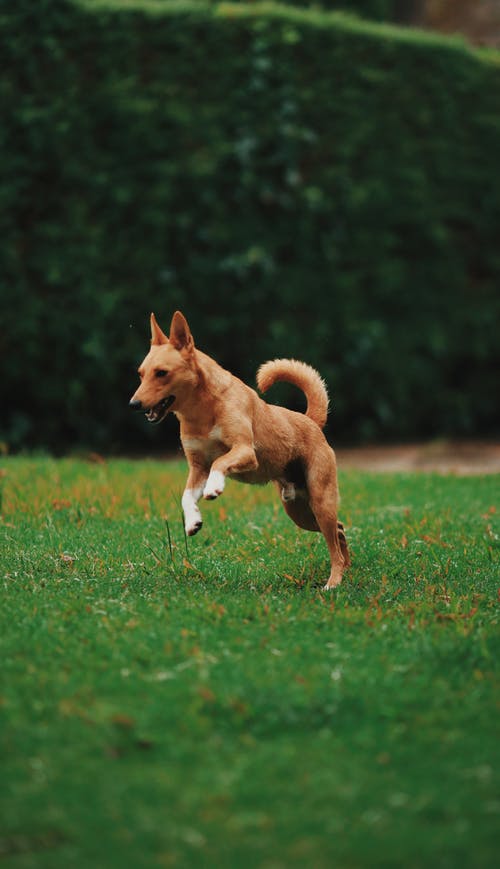
Recently, I posted a video on Wiggles and Woofs’ TikTok account featuring Meatball, an all-star Miniature Australian Shepherd who was learning to be comfortable around strangers and walk on a loose leash.
I was intrigued by a commenter who posted that loose leash walking was not acceptable, and that dogs should heel at all times. When I asked for the rationale behind this statement, the troll (er…commenter) said they did not have time to explain to me why a dog needs to heel at all times.
Do dogs need to heel at all times on walks? Or is sniffing on walks something that dogs do?
Your Dog is a Social Canid
Dogs are canids, meaning they belong to the family Canidae along with animals like jackals, coyotes, foxes, and wolves. As a canid, your dog has certain characteristics that go along with his evolutionary heritage. For example, canids are omnivorous, and have the teeth at the end of their long muzzle to prove it. They eat a combination of prey they hunt as well as carrion and plant matter. They have non-retractable claws (their nails are out all the time, they don’t pull in like a cat), and they have relatively deep-chested bodies. All canids are similar in these characteristics. For an overview, visit Animal Diversity Web’s page on the Canidae family.

By social, I’m referring to the fact that domesticated dogs, when left to their own devices, will form loose social hierarchies. Oftentimes, the best place to study dogs living this free-range lifestyle is to watch village dogs in developing countries. These dogs are still domesticated, but are free to roam and interact with other dogs as they choose. While some mammals may only associate with other members of their species while they are mating or raising young, the social network of dogs gets a lot more…complicated.
It’s important to note that today’s domesticated dogs do not exhibit the same social hierarchies as wolves (which are also highly misunderstood by the general public). In general, village dog social interactions are a lot less structured and more promiscuous than their wolf counterparts.
But anyways, I digress. I get a little too excited talking about evolutionary biology. The main takeaway is: your domesticated dog, while very different from its ancestors, still retains some characteristics common to all canids.
Understanding these characteristics can better help you understand your dog. Though humans have changed dogs dramatically through domestication, we have not (and probably never will) been able to eliminate all their elements of “dog-ness.”
So, what are these “elements of dog-ness” I’m referring to? Here are some things that many dogs do, because, well…they’re dogs.

Scavenge
As I mentioned in the previous section, canids are omnivores. They do not get 100% of their diet through hunting. If you are staring at your dog in horror after they have just dived on top of what appears to be a 4 month old pizza bagel rotting on the sidewalk, maybe it will bring you a little peace of mind to know that scavenging runs in your dog’s DNA. I’m not saying you should LET your dog eat the pizza bagel…I absolutely used my “Leave it” cue to get my dog Ada to move away from a dead mole she found in the woods hiking today…but it’s helpful to understand that your dog does not scavenge things to spite you.
Many of our dogs are just plain bored by eating out of a bowl, especially if that food is available all day. You can help your dog get their scavenging fix through enrichment activities. Scatter their food around the house for them to find, or get a toy like a snufflemat. There are many food dispensing and foraging toys available on the market that help your dog satisfy some of their scavenger urges. You will find that these activities also help mentally tire your dog out and make for a happier, more well-balanced companion.
Chew
Dogs have molars designed for chewing and crushing. Chewing comes naturally to dogs. What doesn’t come naturally is knowing what is OK and what is not OK to chew in your home. This is why puppies (and sometimes rescued adult dogs) have to go through the process of learning what they are allowed to gnaw on. If that new puppy you brought home is trying to chew everything in your home right now: that is normal puppy behavior.

Providing a variety of chewing options, then noticing and praising your dog for chewing the correct items, will help your dog satisfy this chewing urge (and prevent destruction of your sofa). Make sure your dog has some durable options to work on with their mouth, such as marrow bones, elk antlers, yak chews, or bully sticks. If in doubt about what kind of chew is safe for your dog, consult with your vet. Always supervise your dog while they are working on bones, chews, puzzles, etc. to make sure they do not choke or swallow anything inappropriate.
Dig
Some dogs find digging to be highly reinforcing! Digging is part of a caching sequence in canines. In the wild, canids have to worry about other animals coming along and finding their kill or prized food. So, they go through a caching sequence: pick up the food or bone, dig or find a hole, bury food or bone, return to prize later, unearth and chew it.

Many domesticated dogs do not go through this entire caching sequence. Still, some genetic remnants of the behavior remain in many domesticated dogs today. My dog Ada will occasionally try to bury fruit from our pear tree in the backyard, then dig the pears up to snack on their soggy remains months later if given the chance (after a memorable trip to the vet, we now carefully supervise her to ensure she is not eating old, rotting fruit in the yard). I recall a loveable dog I worked with at the animal shelter insisting on bringing his favorite stuffed toy outside during a training session, then deciding he needed to bury it before we could proceed with training.
Some dogs never bury anything, but just enjoy digging holes. Many dog owners finding digging to be an undesirable behavior. Establish an area of your yard where digging is allowed, and bury fun things for your dog to find there. Praise them for digging there, and make it the most interesting spot to dig in the yard! If you find your dog digging in a different area, simply redirect them to the appropriate place to dig. Dogs who enjoy digging should always be supervised in the yard, both to redirect digging in inappropriate areas so your dog can learn, and since some dogs become skilled enough at digging that they tunnel under fences and escape.

Bark
Can you imagine living your life without being able to talk to any other humans? Your dog can’t imagine not talking to her friends, either. While much of canine communication is non-verbal, making noises like barking is part of your dog’s natural communication repertoire.
While making some noise is natural, some dogs take barking to the extreme. If you are finding that your dog is doing a lot of barking, it could be due to a variety of reasons: fear, anxiety, boredom, territorial behavior, frustration, or alert barking, to name a few. Work with a qualified trainer to help determine the cause of your dog’s barking and how to best address the barking in an effective and ethical way.
Want to Chase Critters
As a canid, your dog is an omnivore. That means that part of what they eat is meat. In other words, while they sometimes scavenge, they are also predators. Wild canids have a whole predation sequence: they alert to prey, eye and/or stalk it, chase the prey, grab it, biting it, kill it, then eat it.

Many domesticated dogs today do not have this entire predation sequence. I can think of a shih tzu my friend owned who was not even remotely interested in squirrels, rabbits, birds, or any other prey item. The “alert” part at the start of the predation sequence wasn’t even there! Many dogs will alert to prey and attempt to chase and grab critters; however, if they catch it, they may not follow through with killing and eating it.
If your dog’s squirrel obsession is driving you a bit crazy, it may help you to remember that you have adopted an animal that is a predator. It is a natural behavior for them to notice and want to chase prey. This doesn’t mean that you are doomed to being dragged down the street by your dog while it sprints after the neighbor’s cat.
You can work with a trainer on improving your dog’s redirection, attention, focus, recall, etc. to better manage their predatory instincts. However, be aware that your dog’s interest in critters will likely always be there.

Leave their Mark
Canids have varying degrees of territorial behavior as part of their DNA. Doggy actions such as marking, scraping and kicking the dirt/grass, or even occasionally rubbing their bum on things are examples of marking behaviors. While male dogs that are neutered are less likely to mark, many altered dogs will still urinate in multiple places on their walk to leave their information behind. Similar to a 7th grade boy writing “TOMMY WAS HERE” on his desk, your dog is leaving messages about himself around the neighborhood for other dogs to read.
If your dog is doing marking behaviors outdoors, don’t stress: this is natural dog behavior. It is not a display of dominance or a “problem” that you need to worry about. If your dog is marking indoors, contact your vet if this is a new behavior out of the blue: changes in urination can mean a health issue. If your dog has been marking indoors for a while, and your vet confirms that there is not a health issue, work with a trainer to resolve the problem.
Sniff
Your dog’s nose is at least 40 times more powerful than yours. While humans use vision as our primary sense to experience the world, dogs use their noses more than anything else. When your dog is sniffing, this is their way of taking in the world.
Can you imagine a class of kindergartners where the teacher made them sit silently in their seats for a 6 hour school day? Imagine no recess, no playing in the sandbox, no reading books about dinosaurs, no playing tag with friends. Just sitting still at a desk. And perhaps being punished if they got out of their seat for a little exploration. Would you want this kind of classroom for a child you cared about?
If that classroom sounded rather awful to you, that’s because such a classroom set-up would be wildly inappropriate for the average kindergartner. It’s developmentally appropriate for 5-year-old kids to explore, play, and socially interact. That’s what normal human kids do. Not only would this be terrible for the 5-year-olds, but I argue that it would be stressful for the teacher to try to maintain this type of classroom environment as well.

Similarly, if a dog is required to walk at heel for an entire walk, my argument is that is the same as the kindergarten class. The dog is not being allowed to do behaviors that are natural for the dog, and this deprivation can cause stress and unwanted behavior concerns. Dogs also benefit from having some choice and freedom, not having grueling discipline imposed on them all the time. I also believe that humans benefit from walks that they can enjoy with their dogs, not ones where they feel that they have to micromanage their dog’s every move for the entire outing.
Because sniffing is so enriching for my dog, I let my dog sniff on walks. My rule is that she has to walk on a loose leash (something I taught her to do with positive training). If she attempts to pull, we do not move forward towards that smell. Pulling does not get her what she wants, so she rarely pulls. I also taught her how to heel by my side if needed. However, in my opinion, our walks are for both of us: primarily for her to get exercise and enrichment, and also for me to enjoy the outdoors. If I make my dog heel the entire walk, that is a walk for me (and maybe my control issues), but that is not a walk that is enriching or relaxing for my dog.
Most people that I know walk their dogs in order to give them exercise and enrichment. It might seem counterintuitive, but your dog will likely be more tired, relaxed, and happy after a sniff-walk than a rigidly disciplined walk.
Sniffing is natural, and it has many benefits for your dog. If you need help finding a balance between letting your dog sniff, but also teaching your dog leash manners so the walk is pleasant for your dog too, please get in touch with a qualified, positive trainer.

Your dog’s evolutionary background should not be an excuse for behavior. However, we should understand that sometimes our dog’s behaviors have a reason that is linked to biology. After all, we humans played a significant role in domesticating today’s dogs and modifying them for certain purposes through selective breeding. Since we have chosen to bring them into our homes and our lives, it’s only fair that we expect a certain amount of “dog-ness” from them. It’s important to note that even though the behaviors mentioned in this post have links in biology, we can still modify behavior through positive training.
So, the next time your dog does some “stuff dogs do:” remember, your dog is not trying to spite you. It’s biology!

